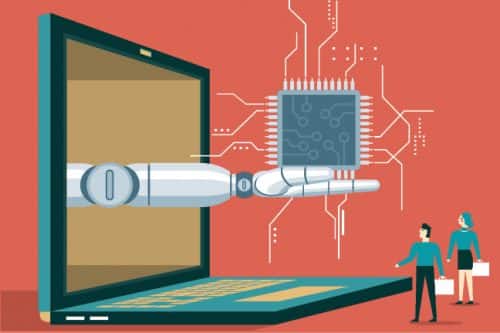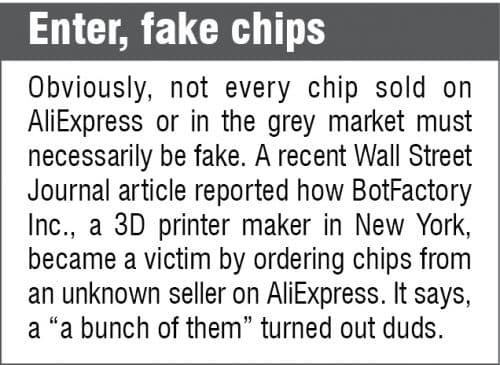Fake components are a reality. Also, a hot and thriving business. So hot, these chips could get you fried (or fired?)
The global semiconductor shortage is dragging down phone makers and auto makers, and almost everyone in the electronics industry. In this backdrop, fakes thrive.
Thrive, where o’ where? Fortunately, not in the inventories of brand-name component distributors you trust (dwindling as their inventories are). For first-hand knowledge, just visit your favourite and trusted component distributor’s web page. For example, Mouser, Digikey, Element-14, or R.S. Components (in no particular order). Now type in a search for your favourite microcontroller family, say STM32F07 to name one. When I tried that, out of the 75 different parts that turned up, only one part number showed up as in stock! The other 74 entries showed zero stock.
Head over to AliExpress, an online marketplace operated by China based Alibaba Group Holding Ltd. Here you can find a great number of vendors selling all sorts of wares. Type in a search for STM32F072, and you will see quite a few listings worded ‘New Original,’ ‘100% Quality,’ etc. Prices may not be dirt-cheap but well. (Acquired wisdoms of supply and demand step in to restore your faith.)
And, if your product needed that chip, and your inventories were drying up fast, would you not be tempted to click now on the red button which beckons with a ‘Buy Now’ call?
You don’t see any red, or do you?

Old wine in new bottles
The phenomenon is not new. I recall reading, a decade ago, about the famed OLPC Project (One Laptop per Child, founded by Nicholas Negroponte in 2005) encountering problems with fake memory devices. The revered IEEE Spectrum too weighed in on the spectre of fakes. A detailed report by the Center for Public Integrity (USA) dating back to 2011 is full of interesting bits.
In 2012, a U.S. Senate Armed Services Committee conducting an inquiry into ‘Counterfeit Electronic Parts In The Department Of Defense Supply Chain’ (See Senate Report No. 112-167) shed light on “overwhelming evidence of large numbers of counterfeit parts making their way into critical defense systems.”
The report begins with this quote: “We do not want a $12 million missile defense interceptor’s reliability to be compromised by a $2 counterfeit part.” The strategic, human and monetary costs of a compromised supply chain can be beyond reckoning.
Fast forward to 2021. Zero Hedge in their July report draws attention to fakes that are flooding the supply chains. They mention two types of counterfeit chips. The first involves used chips taken out from e-waste, repackaged, and then sold. The second variety is chips rejected from a legitimate production line, passed off as good chips. In either case, counterfeits could become embedded in electronic products which are then exported, filling up overseas supply chains.
The report mentions a commercial district of Huaqiangbei in Shenzhen, China, as “well known for its counterfeit chip dealers.”

What you can do
As a reputed producer, if your product is shipped out with a fake or substandard part, you are putting your reputation on the chopping block. Depending on the nature of your product, contractual matters, and circumstances, you could well be liable for consequences and/or prosecution.
You might think that if you were not an established manufacturer but a hardware developer, or an R&D house, you are free from such dangers.
Oops! This is an EFY++ article, which means it's our Premium Content. You need to be a Registered User of our website to read its complete content.
Good News: You can register to our website for FREE! CLICK HERE to register now.
Already a registered member? If YES, then simply login to you account below. (TIP: Use 'forgot password' feature and reset and save your new password in your browser, if you forgot the last one!)







